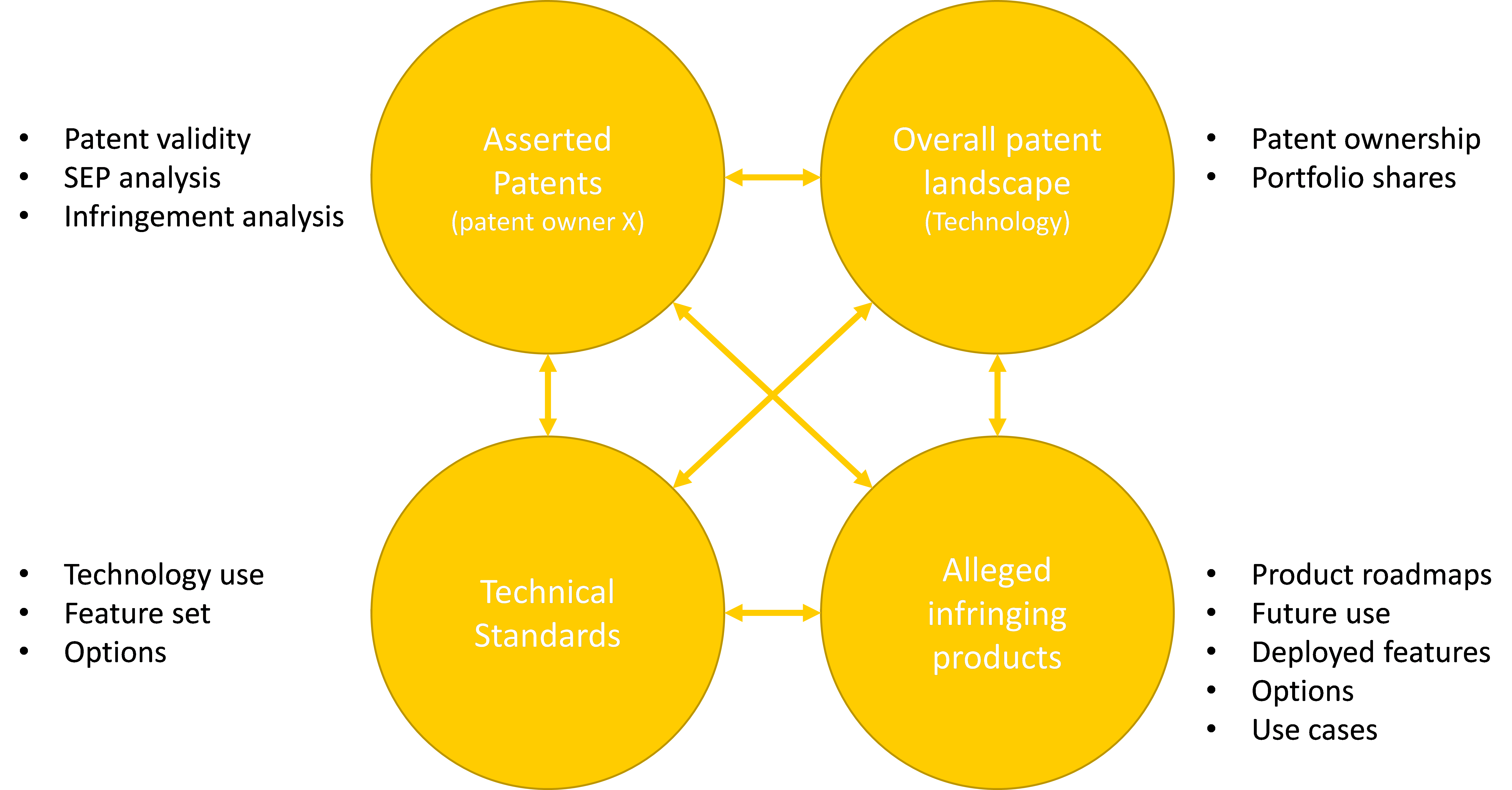
Cubicibuc’s generalised FRAND Model enables users to independently assess economic value of asserted portfolios.
Cubicibuc’s FRAND Model enables all stakeholders to engage in the process to explore and understand the implications of particular assumptions or strategies of FRAND negotiations.
As connectivity brings value to many sectors such as automotive, IoT and industrial automation these sectors increasingly face the challenges of Standards Essential Patents (SEPs). Embedding connectivity / communications into a product opens the door to claims of patent infringement of wireless standard essential patents, which can exposure product owners to claims for patent royalties.
The regulatory environment for patents is changing, as are approaches to licensing and issues of FRAND and royalty setting. Organisations adopting connected solutions should embrace the technology with the right IP strategy plans in place to manage the potential IP risks.
Understanding FRAND in a changing landscape
Many SEP owners adopt “traditional” arguments based on uses of the technology in mobile phones – allowing users to make regular phone calls. For new players in other sectors, these arguments do not always make sense: automotive connectivity is often used for exception cases – emergency calls, or breakdowns.
The “Theory of FRAND” adopted by any one licensor must be understood and put into the context of the wider landscape; royalty demands must be extrapolated across the entire stack of SEPs, and potentially across all relevant standards in order to identify a total cumulative rate for the alleged infringing product; and as willing licensees any counter offers must themselves be seen as FRAND.
SEPs in context
The challenge is to counter patent claims with an understanding of the relationship between the patents (both the asserted portfolio and the wider landscape), the technology, technology stack, and the products.
Knowing the relative size of the patent landscape, the importance of the patents within the scope of the standards and how or even if those features are actually implemented are key steps in developing a defensive strategy.

Building a FRAND compliant model
In addition to understanding the context of the FRAND analysis it is important to develop a model of a FRAND compliant license. This had two benefits:
- To ensure any counter offer made can be justified as FRAND (within the assumptions held)
- To build an overall view of the technology stack and royalty stack of the alleged infringing product.
Recent court judgements in both US and Europe demonstrate there is an acceptance that a Top-down approach to determine damages / FRAND rates is an appropriate and viable approach.
Cubicibuc has developed a generalised “Top-down” licensing model which can be used by licensors and licensees alike to explore scenarios and build a FRAND compliant royalty analysis:

Our flexible model allows for scenarios to be built and tested. Sensitivity analysis around the available modifiers allow stakeholders to explore the potential risks associated with particular assumptions.
Historic and geographic data can also be explored in relation to key markets and patent portfolios.
In addition, we combine data-points available from third party reports and from public judgements on landscape sizes, and FRAND royalty rates, such as:
- The Hon. Mr Justice Birss of UK High Court in Unwired Planet vs Huawei Technologies, and
- The Honourable James V. Selna, Judge of the District Court of the Central District of California in TCL vs Ericsson.
Benefits
Having a common understanding within the team is an important knowledge building stage, and this process will allow organisation to build issues around SEPs and FRAND licensing into its strategic processes and thinking for future technologies, and future products.
Using Cubicibuc’s FRAND Model enables all stakeholders to engage in the process to explore and understand the implications of particular assumptions or strategies.
Cubicibuc supports clients by:
- providing confidential and independent technical services to evaluate IP assets
- performing IP audits, patent mining and landscaping exercises
- developing IP strategies to support commercial negotiation, licensing and litigations
- providing independent technical expert reports
We work with businesses ranging from smaller start-ups to mature multinationals; from early stage invention capture through to exploitation and monetisation of IP assets.
To discuss how Cubicibuc’s expertise can help your organisation manage and exploit IP, please contact us now.
